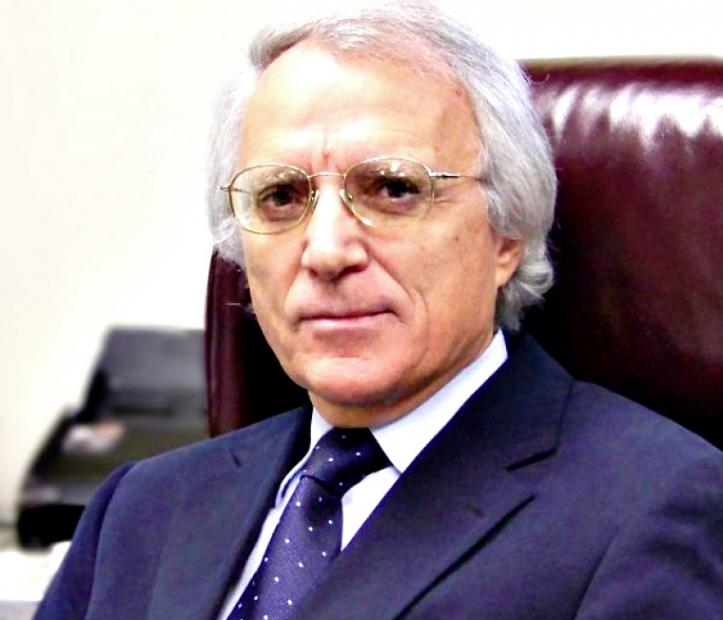“Italian-Americans across the United States, please help out!” This is the bare-bones message from Vito M. Campese, who ranks among the most prominent nephrologists in the field and is current President of the Italian Scientists and Scholars of North America Foundation (ISSNAF).
Campese, who was also one of the founding members of the foundation, dreams of Italy, as a country which can reverse its current downward spiral. Matter of fact, Italian system of research needs a urgent reformation.
A joint effort from each and every one of us, would bring our home country, from the tail end of the scientific race to the top.
What is your cultural background?
I was born in Bari (Apulia region of Italy) and graduated from the Faculty of Medicine, at the local university.
In 1974, I came to the Keck School of Medicine (University of Southern California, USC) on a fellowship.
In the prosecution of my career, I became Professor of Medicine, Physiology and Biophysics and chief of the Division of Nephrology and Hypertension, at USC.
Currently, I’m still full time Professor of the same discipline, with a primary focus on kidney diseases and hypertension.
How was your adjustment process to Los Angeles?
Certainly, it was not easy. I came here with my wife and our small child. Our first year was pretty “traumatic.”
After the one year fellowship, they asked me to extend it for a second year. Then, I was offered the position at USC. At that time, I had a secured position at the Policlinico, in Bari, so I had to make a decision.
My choice to stay here was partly influenced by the unstable political situation in Italy, during the mid-seventies.
In the two years, spent at the lab, I realized how, in the US, I was able to carry on my research, while, in Italy, I would have not had the same opportunity.
You are the President of Italian Scientists and Scholars of North America Foundation (ISSNAF). What is the mission of this organization?
This non-profit, apolitical organization was founded in 2008, under the solicitation of the Italian Embassy, in Washington D.C.
The original idea was pretty simplistic, that is to make Italian scientists, across North America, join forces and see what would have come out of the collaboration.
Afterwards, the organization was structured as a foundation, aimed at building scientific links, among the Italian scientists in Italy and the ones, operating in North America (including Canada).
There is a large share of Italian researchers, who come to the U.S. for a while, and, then, go back to their home country. They become a precious vehicle of knowledge about the North American research system, towards the Italian counterpart.
We’ve developed a collaborative effort with the Ministry of Foreign Affairs and International Cooperation, the Ministry of Education, Universities and Research (MIUR) and some Italian regions of Italy, primarily with Marche, and provinces, the likes of Trento and Milan.
We’ve created a successful organization within the organization, called Young ISSNAF, which values the young scientists.
Once a year, in the Italian Embassy in Washington D.C., we award the best young Italian scientists across the U.S. Besides a significant monetary prize, up to last year, the President of Italy used to confer a Medal of Honor.
The Italian Embassy in the U.S. has always put itself at our service and we regularly coordinate programs together.
Years ago, I was asked by the above mentioned Embassy and Ministries to formulate a document, featuring our suggestions on how to improve the University and Research system in Italy.
We spent an entire summer, working on it. Unfortunately, despite the document was praised by all the political parties, little or nothing was done to implement the proposals.
Our foundation has relatively autonomous chapters, all over the United States. There are also specialized chapters, the likes of Radiology, Oncology, and the NASA one.
One of our most exciting current projects, in partnership with the University of Milan and, hopefully, the region of Lombardy, consists in bringing North American scientists to work at nanotechnologies, inside the spaces, utilized by 2015 Milan Universal Exposition.
We offer a readily available resource for our colleagues, operating in Italy. Unfortunately, the Italian political system is shortsighted and fails to recognize the value of research, which is key to innovation and, consequently, economic growth.
Countries, such as China, Japan, U.S., Israel and Germany are all surpassing Italy, because they invest considerably in research.
A major issue is that the Italian-American community is proud to recognize its Italian roots, but not really prompt to support the Italian scientific community.
For instance, during last year’s annual meeting, held by the National Italian American Foundation (NIAF) in Washington D.C., exponents of the movie industry, entrepreneurs and multimillionaires were celebrated, while the excellence reached by Italian-American scientists was not recognized at all.
Even small donations from each of us, belonging to this community, or ad hoc fellowships, to encourage young Italian scientists to do research in the States, could make a substantial difference.
In what ways is ISSNAF beneficial to the general public?
Without science there is no innovation and, without the latter, there is no economic future. Every technological achievement derives from the studies and research of scientists.
For instance, wireless communication would not be possible, without the so-called, “Viterbi Algorithm”, formulated by the Italian-American electrical engineer, Andrew James Viterbi.
Innovation is essential in every field, from agriculture through medicine to the automotive industry.
Italy’s persistent economic crisis is due to the fact that the country is not innovating enough. Matter of fact, looking at the last decade, Italians don’t figure among the major innovators.
What is your focus of research, as head nephrologist at Keck’s Hospital of USC?
My main field of research is hypertension and the relations between kidneys and brain. In fact, the central nervous system (CNS) is affected by the kidneys. The latter affects the production of adrenaline, which causes a rise in the blood pressure.
A practical implementation of this concept, has been the development of special catheters. Those can be inserted into the kidneys to destroy the nerves, which connect the pair of organs to the brain and enable blood pressure control in patients with severe forms of hypertension.
Currently, I’m also part of an advisory committee, investigating the causes of an epidemic of chronic kidney disease, in the Mesoamerican area (Nicaragua, Costa Rica and Mexico) but also, in a portion of Brazil.
I’m glad to give my contribution to this cause of social relevance. Besides, this emergency may affect California, as well, as a consequence of the conspicuous migratory surge from those areas.
I’m also involved in an interdisciplinary educational project, in the schools of the Los Angeles District, likely to be funded by the Zuckerberg Foundation.
This is going to be a “cross-ocean” initiative, involving three groups in Italy, one in Milan, one in Livorno (Tuscany) and one in Grottaglie (Apulia).
The project will be primarily aiming at prevention of children’s obesity and associated cardiovascular and kidney disease, through educational programs, featuring an extensive use of technology.
Could you tell us in what proportion hypertension is caused by genetic factors, as opposed to bad dietary habits, like an high consumption of salt?
Hypertension is caused by genetic factors, in a small proportion (around 20 %). Matter of fact, among primitive societies, which don’t eat much salt, hypertension is rare.
In our modernized societies, salt is widely consumed. However, there are other crucial factors, such as too low potassium, by not eating enough fruit and vegetables, too fat diets and the consumption of fructose-based products (sugar from sugarcane, soda drinks, and factory-produced snacks).
An intemperate consumption of alcohol, together with obesity, are other major factors for hypertension.
The Mediterranean diet is a good remedy in contrasting and, especially, preventing high blood pressure.
In conclusion, do you like living in Los Angeles?
By now, Los Angeles is my second home. However, my first one is Italy. Two years ago, I bought a house in Bari and I enjoy going back there.
I like the open-minded mentality, typical of California, as opposed to the narrow-minded mindset, peculiar to Europe and Italy, in particular.
I’m grateful for the opportunity of professional fulfillment, offered me by this country, which welcomed my family and I.






























